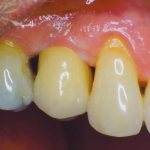Surround negativity with positivity?

Let's face it, no one person or business can generate all positive customer reviews, since there is no pleasing everyone. In fact if a business has no bad reviews it seems like the reviews are not real. So what's a business owner to do after a scathingly bad review.... Surround it with positive reviews if possible. Hopefully the business has enough enthusiastic customers willing to write glowing reviews to compensate for a few "sour grapes". If not the business may suffer from too many bad reviews since it will appear to imply that the service it provides is indeed inferior. My staff and I make an extra effort to ensure that our patients feel extremely well taken care of and for the most part our reviews do back up this claim. For those few who leave dissatisfied or disappointed I am truly sorry that they had anything other than a positive experience. Often, when I am aware of a patient who leaves unhappy, I will reach out to them personally to speak to them over...




